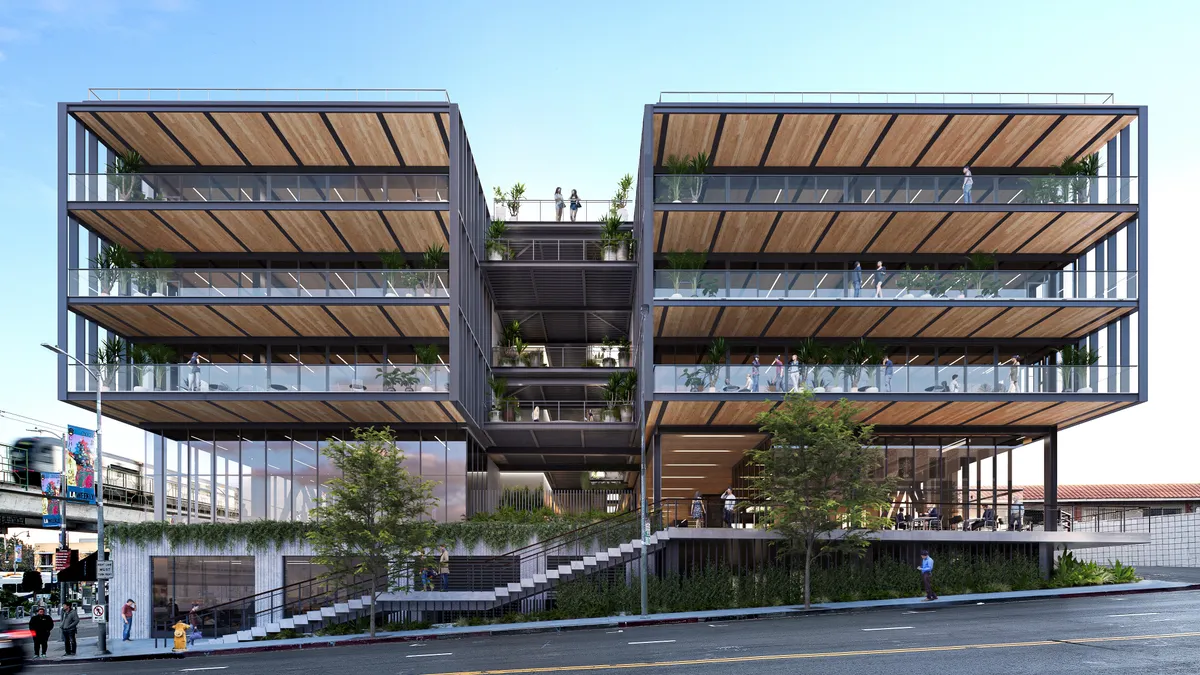Dive Brief:
- Boston-based Shawmut Design and Construction is using cross-laminated timber (CLT) to construct a 75-foot-tall, 125,000-square-foot mixed-use office building in Los Angeles. The company is working in conjunction with Santa Monica, California-based real estate firm Redcar Properties and Portland, Oregon-based architecture and design firm Lever Construction, according to a release shared with Construction Dive.
- Using CLT helped the company dodge supply chain problems such as material delays and sped the project up, Greg Skalaski, executive vice president of the West for Shawmut, told Construction Dive.
- While CLT is a relatively new building material, many in the industry are enthusiastic about its possibilities. Forest-rich states including Washington and Oregon have been aggressive in supporting it, according to Vox reporting, and Oregon named CLT a "statewide alternative method" in 2018.
Dive Insight:
Cross-laminated timber, according to the American Plywood Association, consists of several layers of kiln-dried lumber boards stacked together with adhesives that come pre-fabricated in blocks. The material generates almost zero waste on-site, and is also fire-resistant and performs well in earthquakes.
This isn't the first time that Shawmut has used CLT in building projects. In 2020, Shawmut helped construct a new residence hall at Brown University using CLT methods, as well as the North Hall at the Rhode Island School of Design, which the school called "the first CLT-steel hybrid residence hall in New England."
Skalaski said that using CLT for the Los Angeles project made sense for the location, calling the technology a representation of a "California-type project."
"The connection with the outdoors has always been there with buildings in California and you look at some of these really great houses in California, there's always this indoor-outdoor component, the doors are open, the windows are open. It's that kind of environment that is now being transformed into the CLT office building," Skalaski said.
The construction industry is a significant generator of waste: In 2018 it produced 600 million tons in the U.S., more than twice the amount of municipalities generated, according to the EPA. As the industry searches for ways to cut back, technologies like CLT can help it reach its environmental goals.
Skalaski also emphasized the environmental benefits of CLT construction. The product didn't need to be shipped from outside of North America; rather the panels were manufactured in British Columbia and sent to California, he said.
"You're not talking about shipping something from around the world. It's done through sustainable forests," Skalaski said.
Shawmut expects the building to be completed in August 2022.













